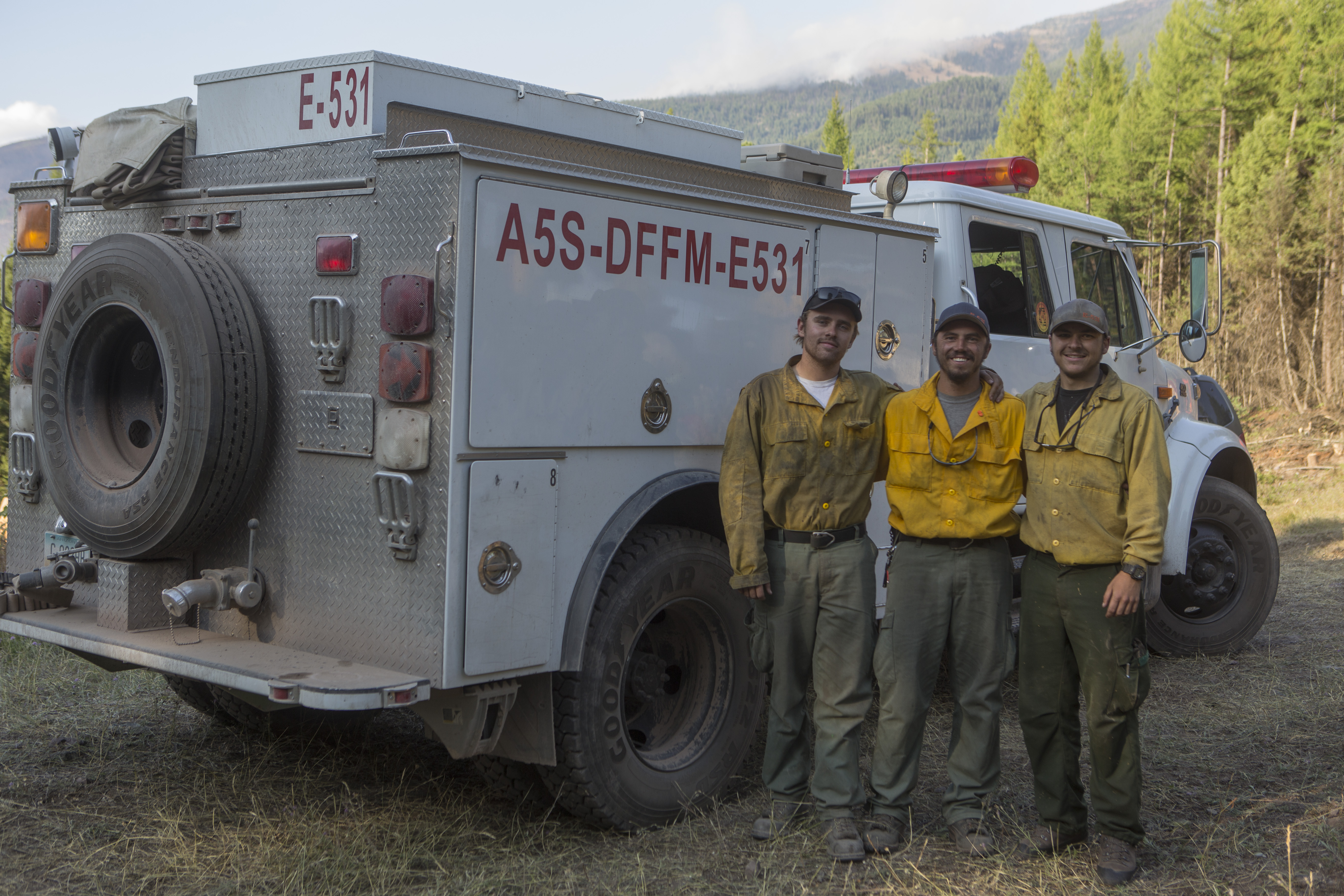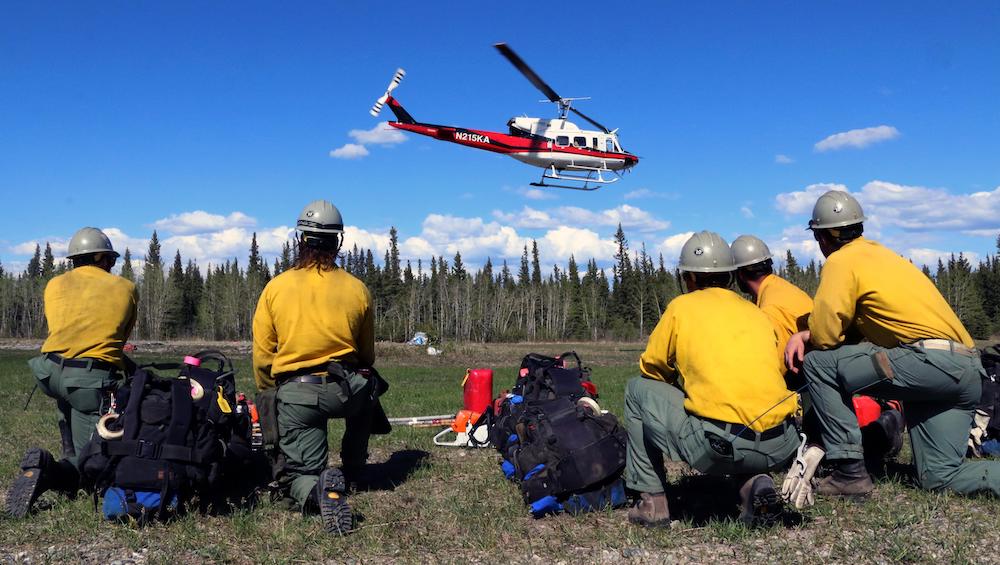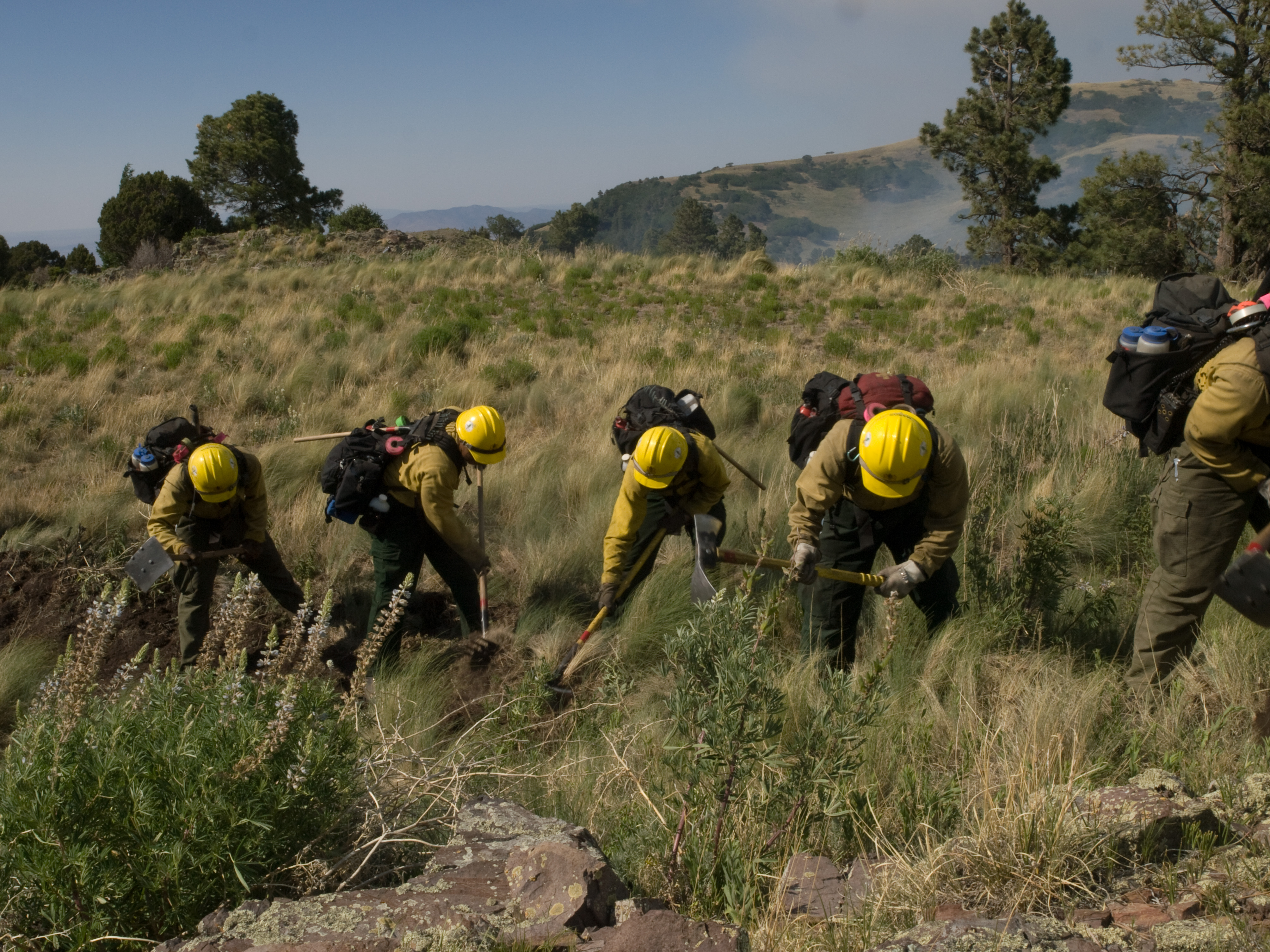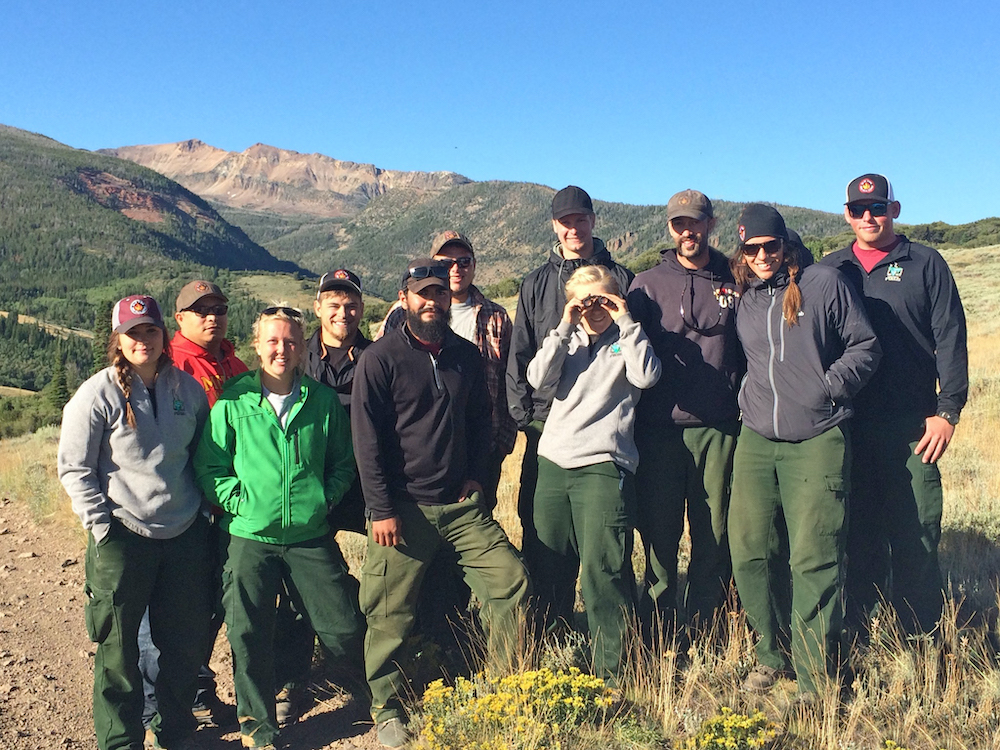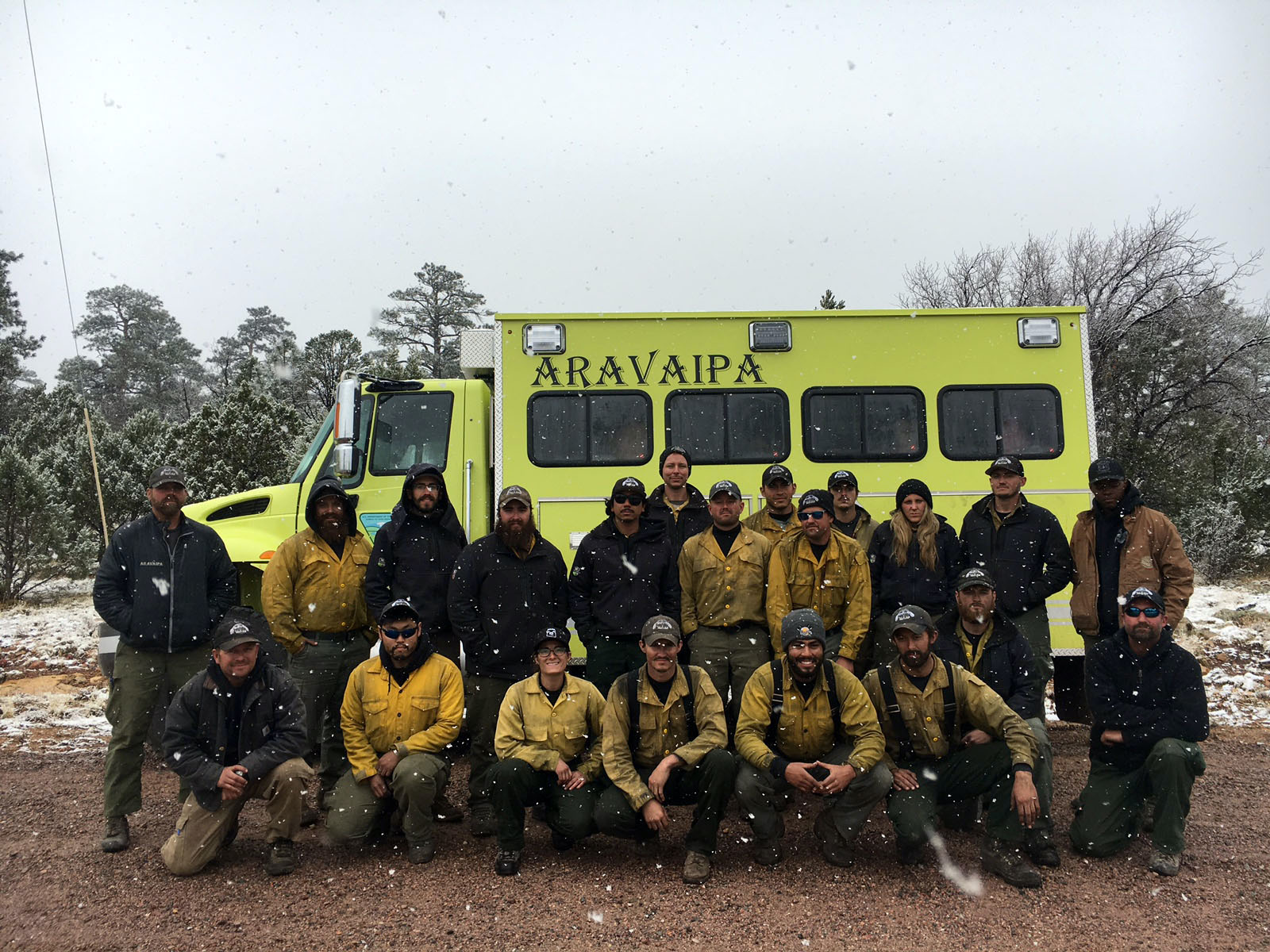Engine Crews
Wildland firefighting agencies use engine crews as a primary initial attack resource on public lands across the United States. Engine crews are cohesive teams of employees that uphold a tradition of excellence and have solid reputations as multi-skilled professional firefighters.
Engine crews of up to 10 people are used for initial attack, suppression of large fires, support of management-ignited fires, patrolling, and working with the public to promote fire prevention and education.
Crewmembers are in extremely good shape and adhere to a strict physical fitness program. They are trained to work with specialized firefighting equipment and perform many strenuous activities, including construction of fireline with hand tools, hose lays, burnout operations, and mopping up hotspots near the fire's edge.
Engine crews use many tools for their jobs. Their main tools are fire hoses and water. They are skilled in hoselays, fitting identification and use, portable pump setup, use of foam, hosepack construction and deployment, and engine operations. They are also well-trained in using firefighting hand tools, chainsaws, drip torches, portable pumps and radios.
Helitack Crew
Helitack crews provide land managers with a safe, highly skilled, and productive aerial firefighting resource. Crew members are specially trained in the tactical and logistical use of helicopters for fire suppression. These crews are a primary initial attack resource transported to wildfires by helicopter. Often, they are first on-scene and assess the wildfire.
A day on a helitack crew consists of preparing and positioning fire gear on the helicopter or chase vehicle, a morning briefing consisting of weather, situation report and safety, training and post-fire discussions, daily projects such as vehicle and facilities maintenance, and a fitness workout that includes weight training, push-ups, pull-ups and sit-ups.
When a helitack crew is sent to a wildfire, they can work up to 14 hours a day. Their duties consist of fireline construction with hand tools and chainsaws, directing helicopter water drops, building safe helicopter landing zones, transporting firefighters and cargo to helispots, and managing multiple helicopters assigned to a wildfire.
Interagency Hotshot Crews
The primary mission of Interagency Hotshot Crews (IHCs) is to provide a safe, organized, mobile, and highly skilled hand crew for all phases of wildland fire operations. The arduous duties and specialized assignments given to IHC personnel require staffing, certification, training, equipment, communications, transportation, organization, and qualifications that are uniform and adhered to by all IHCs.
IHCs consist of 20 firefighters that are specially trained in wildland fire suppression tactics. They provide an organized, mobile, and skilled workforce for all phases of wildland fire management. Hotshots are considered elite among wildland firefighters due to their extensive training, high physical standards, and ability to undertake difficult assignments.
To effectively perform their duties, each firefighter must maintain a high level of physical fitness. The daily and season-long physical rigors can be extremely exhausting and demanding. Line gear can weigh in excess of 65 pounds, daily hikes to and from the fireline can surpass four miles, elevation gains can exceed 2,500 vertical feet, and shifts can last for more than 14 hours. These firefighters are highly mobile and trained to be self-sufficient with the necessary vehicles, gear, and tools. Hotshots crews experience and training qualifies them to conduct complex fire operations.
There are 90 IHCs representing the five federal firefighting agencies. The U.S. Forest Service has 68 crews and the Department of the Interior has 22 crews.
Hand Crews
Hand crews normally consist of 18-20 crewmembers and are used for a variety of operations on wildland fires. Hand crews are assigned duties on wildland and prescribed fires that primarily consist of constructing firelines with hand tools and chainsaws, burning out areas using drip torches and other firing devices, mop-up or clean-up, and rehabilitation of burned areas.
Fuels Crews
A fuels crew specializes in vegetation management related to wildland fire hazards and risks. Fuels crews generally have 10 members who focus on implementing fuel treatments in forest and rangeland fuel types.
Fuels crews help reduce fuel availability and promote healthy landscapes by thinning/clearing vegetation and conducting prescribed fires. Depending on the vegetation type and need, treatments may include mechanical removal of fuel to create fuel breaks, chemical applications to treat invasives, and introducing fire into a controlled environment for ecological benefits.
These crews have the skills and qualifications to assist in wildland fire suppression operations when needed.
Veteran Crews
Veteran crews are specifically comprised of all military veterans. These hand crews provide job and career avenues for returning veterans, allowing them to find post-military careers that will ideally help in the transition back to civilian life.
Veteran crews are used for a variety of operations on wildland fires. Primary duties consist of constructing fireline with hand tools and chainsaws, burning out areas using drip torches and other firing devices, and mop-up or clean-up and rehabilitation of burned areas.
